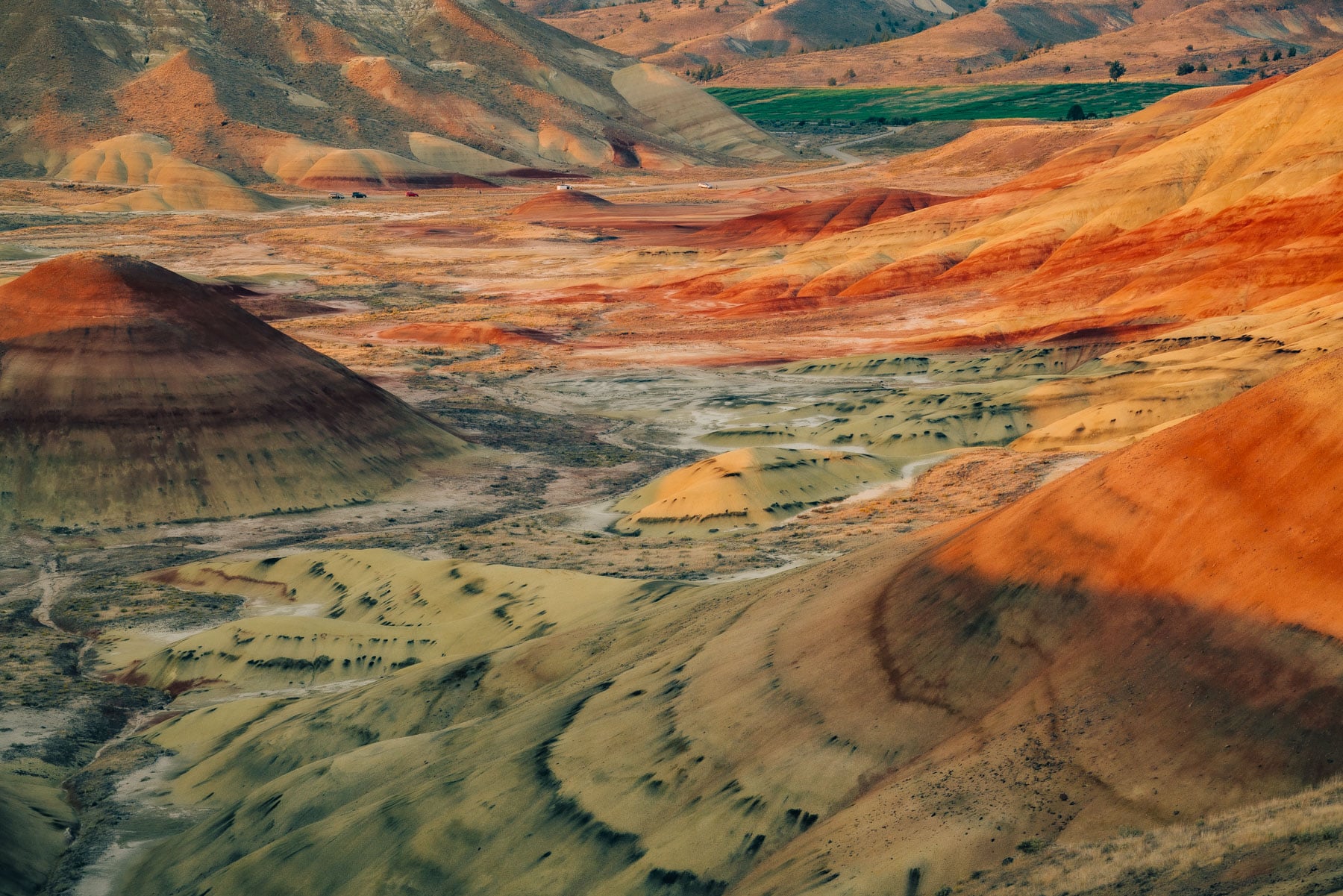
Article Summary: Oregon National Parks
Oregon National Parks! In this article, we feature all of the incredible park sites in the great state of Oregon. We’ve got 12 national park sites for you to see on your next visit to the Beaver State.
These Oregon National Parks include amazing historic sites, incredible monuments, beautiful parks, legendary trails, and much more.
Oregon is one of my absolute favorite places in the United States to visit. Over the past 5 years I was able to visit one of my sons who lived in Portland and was blown away by the incredible scenery.
Since then I’ve been to so many of these amazing places. Did I mention that I taught history? I spent a lifetime teaching about the history behind these momentous sites. Then I got to see them firsthand. And now I’m sharing the stories of these incredible places with you. It doesn’t get any better than that!
Not only that but I taught history for over a quarter of a century. Now I enjoy researching and writing these articles for More Than Just Parks.
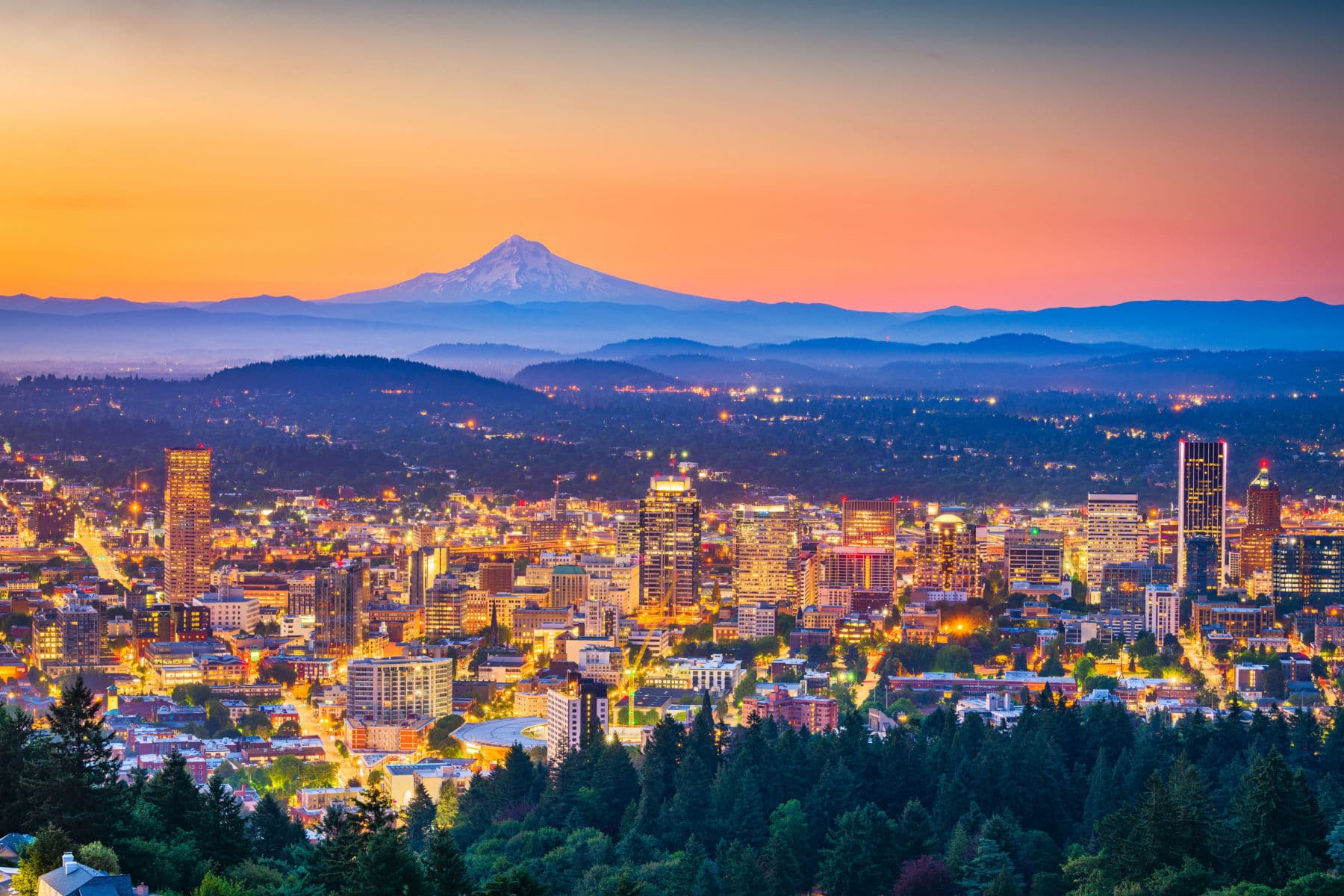
So, What Is A National Park?
We get asked that question a lot because there’s a difference between a “national park” and a “national park site.” To help you understand that difference you might want to check out our article titled: What Is A National Park Really?
If you’re planning to visit the Beaver State then one book that I highly recommend is: Oregon Bucket List Adventure Guide & Journal: Explore 50 Natural Wonders You Must See & Log Your Experience!
We’ll give you 12 wonderful reasons why you’ll want to make Oregon your next vacation destination.

Table Of Contents: Oregon National Parks
National Parks of Oregon
1. California National Historic Trail
Oregon National Parks. Where do we begin? How about with a legendary trail named after the Beaver state’s neighbor to the south. Of course I’m referring to the California National Historic Trail.
During the 1840s and 1850s, over 200,000 emigrants traveled to the gold fields and rich farmlands of California. It was the greatest mass migration in American history.
The California National Historic Trail retraces this historic migration. It’s over 5,000 miles long and covers portions of 10 states.
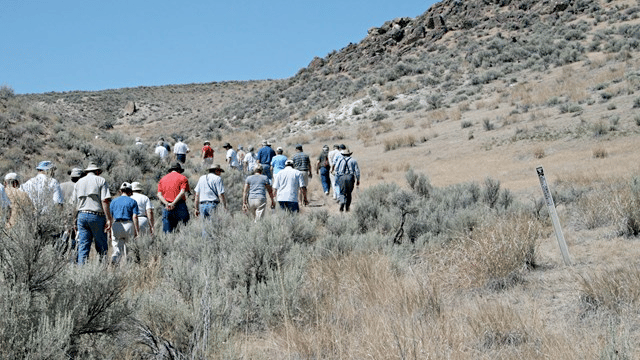
The California Historic Trail In Oregon
Known in Oregon as the Applegate Trail or Cut-off, the Southern Emigrant Road, and the South Road, the trail entered the state west of Lake Miller, crossed the Klamath River and Cascade Mountains, and after entering the Rogue River Valley turned north to its terminus in the Willamette Valley. (Source: BLM)
As a retired history teacher I’m always on the hunt for a story with an interesting history. If you’re following the California Historic Trail in Oregon then I recommend a stop at the Douglas County Museum in Roseburg, Oregon.
Just one more reason why you’ll want to visit the amazing Oregon National Parks.
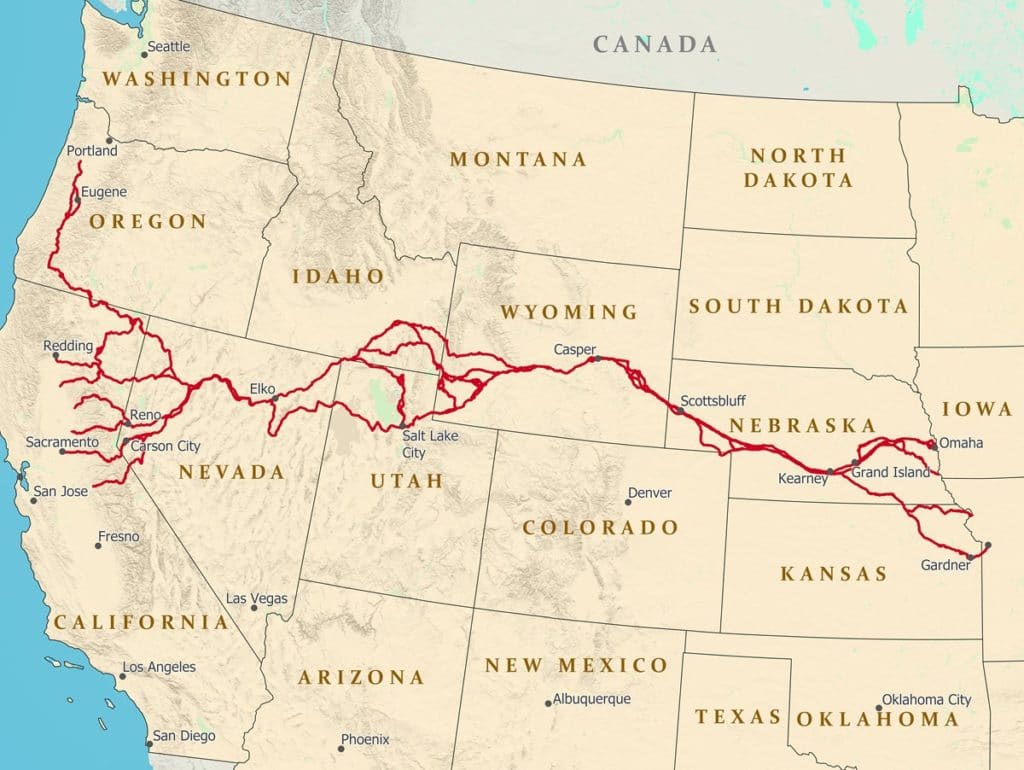
Check Out Oregon’s Largest Natural History Collection
While you’re at this wonderful museum you can check out Oregon’s largest natural history collection. More than 7,500 items are used to help tell the ancient and contemporary stories of the Umpqua River Valley.
You’ll also find one of the Northwest’s most comprehensive plant collections in its research herbarium with nearly 3,000 catalogued specimens.
RELATED: 4 EPIC Iowa National Parks (A Very Helpful Guide + Photos)
2. Crater Lake National Park
Oregon National Parks includes one of my favorite national parks in America. Crowning the Cascade Mountain Range, the park contains vibrant forests, bountiful wildlife and an awe-inspiring blue lake worthy of its nickname “lake majesty.” Of course I’m describing Crater Lake National Park.
Its geologic history spans back thousands of years and inspires visitors today as they swim, snowshoe, ski, hike and cycle through the mountainous terrain.
The deepest lake in America is one of the seven wonders of Oregon and is surprisingly the state’s only national park. The kind of blue water that exists here is unlike any other in the world.
Crater Lake National Park. It’s sure to captivate you. While the park itself is fairly remote and quite a drive to get to, it’s well worth a visit nonetheless.

CHECK OUT: 11 FASCINATING Crater Lake National Park Facts
Crater Lake Was Discovered By A Young Prospector
As a retired history teacher and a lifelong history buff, I always like to start off with a good history lesson. According to the historical record, the first people to know about Crater Lake were the Klamath Indians.
While they knew of its existence, they seldom went there. According to their legends, they regarded the lake and the mountain as the “battleground of the gods.”
Fast forward to American fortune hunters in the nineteenth century. Like Death Valley, Crater Lake’s history features prospectors looking for buried treasure. Crater Lake was discovered by a young prospector on June 12, 1853. His name was John Wesley Hillman.
Hillman was leading a party in search of the “Lost Cabin Mine.” Having failed in their efforts, Hillman’s group returned to Jacksonville, a mining camp in the Rogue River Valley. It was there that they reported their discovery which they had named Deep Blue Lake.
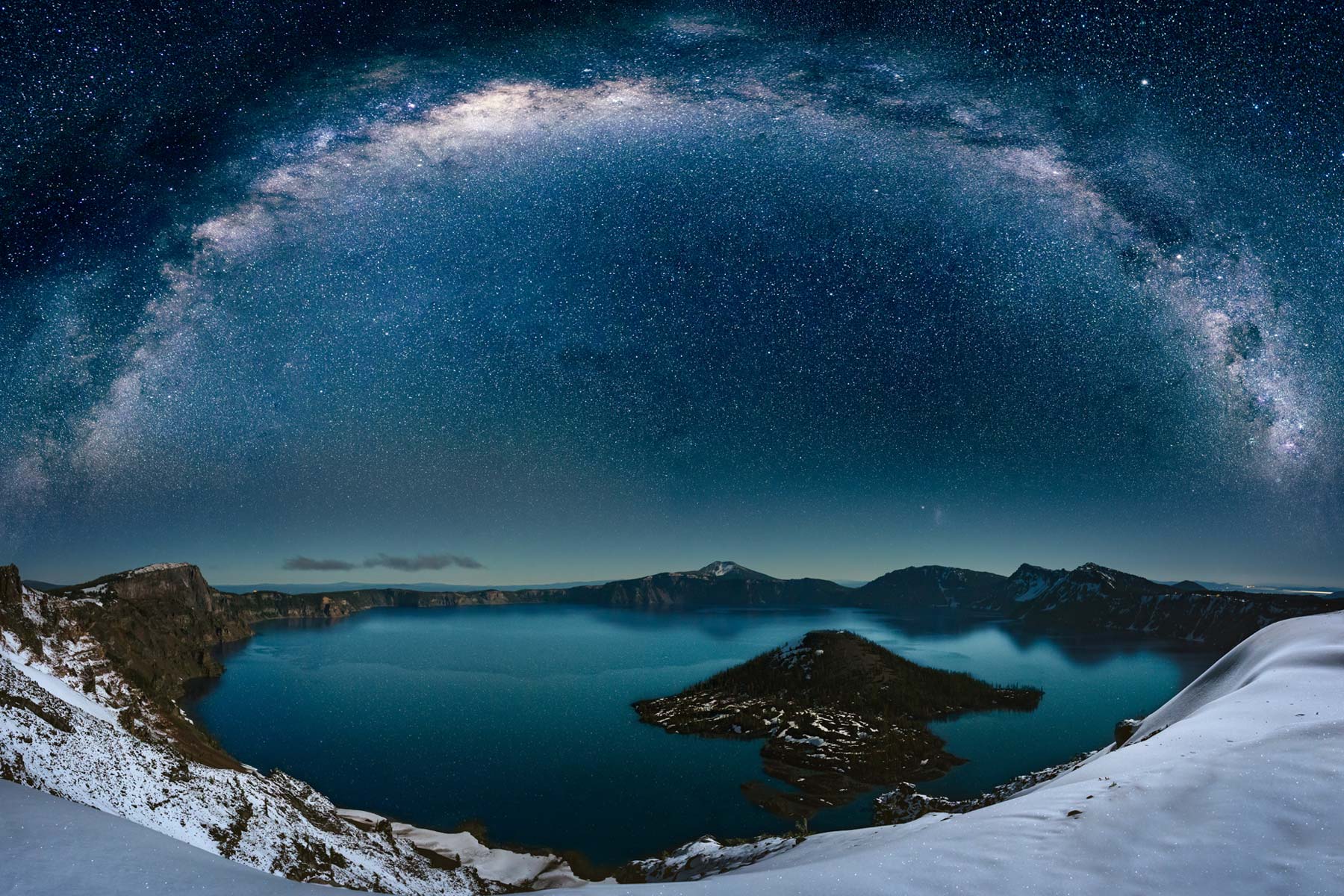
Things To Do At Crater Lake
There are many things to do at Crater Lake National Park, including:
- Hiking: There are over 90 miles of trails in the park, offering a wide range of difficulty levels and stunning views of the lake and surrounding landscapes.
- Camping: There are two campgrounds available for tent camping and RV parking.
- Scenic drives: Visitors can drive around the rim of the lake and take in the beautiful views.
- Ranger-led programs: Park rangers offer a variety of programs, including guided hikes, boat tours of the lake, and educational programs about the park’s geology, history, and wildlife.
- Fishing: Visitors can fish for rainbow trout and kokanee salmon in the lake.
- Boating: Visitors can take a boat tour of the lake or rent a boat to explore on their own.
- Swimming: Visitors can swim in the lake, but it is only allowed in designated areas and only during the summer months.
- Snow sports: Visitors can enjoy cross-country skiing, snowshoeing, and snowmobiling in the park during the winter months.
- Wildlife Viewing: The park is home to a wide variety of wildlife, including deer, bears, eagles, and an array of birds species.
- Photography: Crater lake is a popular spot for photographers, especially during sunrise and sunset.
- Star gazing: The park is far from city light pollution which makes it a great spot for stargazing.

Take A Trolley At Crater Lake
During the summer, Crater Lake Trolley, another concessioner for the park, offers daily trolley tours. The tours typically begin in July and run through mid-September. The trolleys make stops at magnificent overlooks with opportunities for photographs and moments for reflection.
If you prefer your own vehicle, however, then I recommend the historic Scenic Rim Drive includes 33-miles of lake views, panoramic vistas, forests and meadows. There are 30 overlooks, five picnic areas, hikes of various difficulty, geologic formations and several waterfalls.
It’s a great opportunity to explore the natural beauty and geologic wonders of this amazing park.
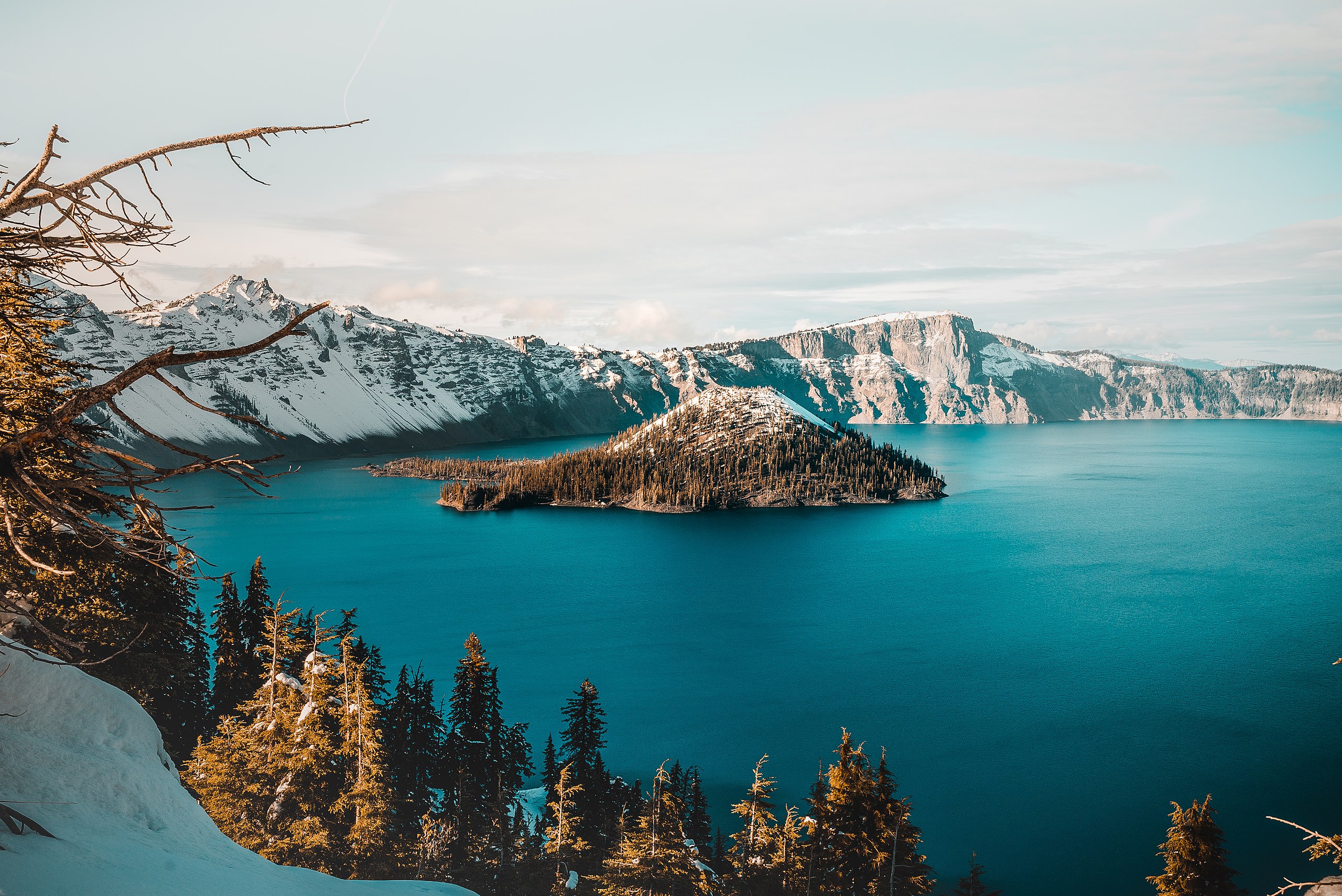
RELATED: 11 FASCINATING Crater Lake Facts (interesting Trivia + Quick Facts)
3. Fort Vancouver National Historic Site
Imagine a place where you can learn about archeology, aviation, colonization and settlement, explorers and expeditions, forts, industry, westward expansion, Native American heritage and so much more. Oregon National Parks features one of the most interesting forts you’ll find.
Fort Vancouver National Historic Site commemorates the history of the Hudson’s Bay Company’s fur trading post, Fort Vancouver, which was the primary hub of the Pacific Northwest fur trade in the 19th century.
The fort was established in 1824 by the Hudson’s Bay Company, a British fur trading company, as a base for trading with indigenous tribes in the region. The fort quickly grew into a major center of commerce and culture, serving as a hub for trade, agriculture, and industry.
It was also a center of political and social activity, serving as a hub for diplomacy and cultural exchange between the United States, Great Britain, and the indigenous peoples of the Pacific Northwest.
.jpg)
An Important Site In The American West
Fort Vancouver was an important site in the history of the American West, and played a key role in the development of the Pacific Northwest. The fort was also an important center of American military activity in the region during the Mexican-American War and the Oregon boundary dispute.
The fort was gradually abandoned in the late 19th century, as the fur trade declined and the center of economic activity shifted to the nearby city of Vancouver. The fort’s buildings and grounds fell into disrepair, but in the early 20th century, efforts were made to preserve and restore the site.
Fort Vancouver Today
Today, the Fort Vancouver National Historic Site includes a reconstructed fort, a visitor center, and a museum. Visitors can take guided tours of the fort, see restored 19th century buildings, and learn about the history of the Hudson’s Bay Company and the role of the fort in the development of the Pacific Northwest.
The fort also hosts several educational and interpretive programs, including living history demonstrations and special events throughout the year.
Fort Vancouver National Historic Site serves as a reminder of the important role played by the Hudson’s Bay Company in the history of the Pacific Northwest and the United States and the significance of the fur trade in the region’s development.
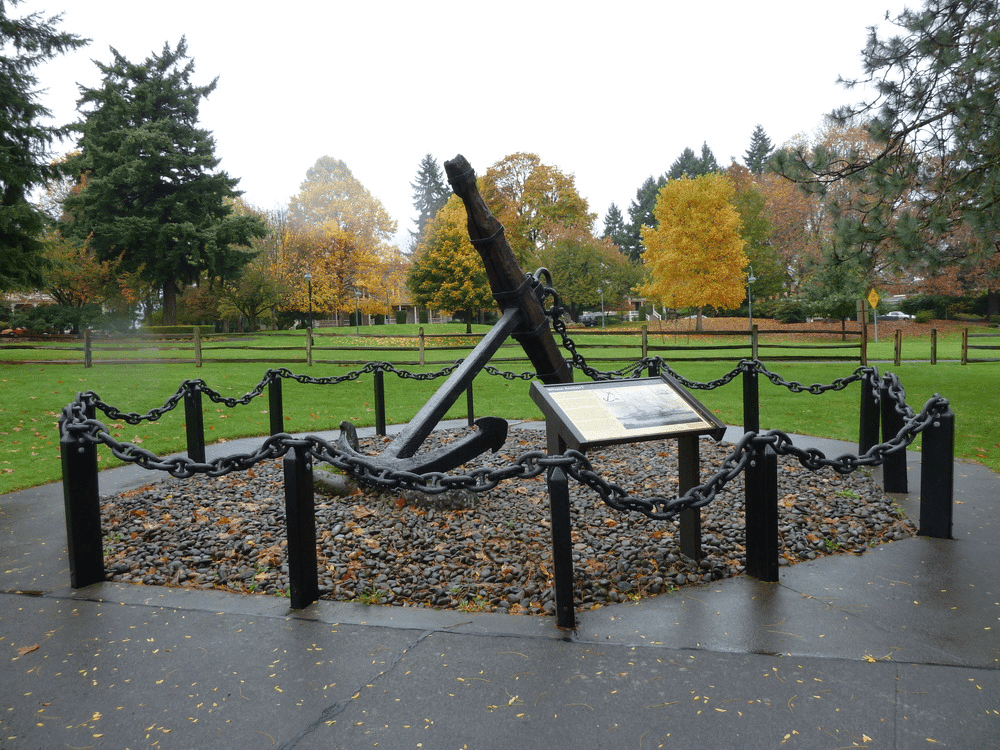
RELATED: 7 Epic KANSAS National Parks (helpful Tips + Photos)
4. Ice Age Floods National Geologic Trail
From scenic wonders to geologic miracles. Within the amazing collection of Oregon National Parks is a place which tells the incredible story of how some of our most amazing natural wonders were formed. That place is the Ice Age Floods National Geologic Trail.
Did you ever wonder how these amazing geologic formations came into being. When I went to college, I always wanted to take a geology course so I did. Of course, being that it was a California school the course I took was all about earthquakes. It gave the expression “shake, rattle and roll” a whole new meaning for me.
Back to my geology story. These amazing places were formed by an incredible network of routes connecting natural sites and facilities. This provides geologists and laypeople with an interpretation of the geologic consequences of the Glacial Lake Missoula Floods of the last glacial period.
This occurred about 18,000 to 15,000 years ago. It includes sites in Washington, Oregon, Idaho, and Montana. School’s out!
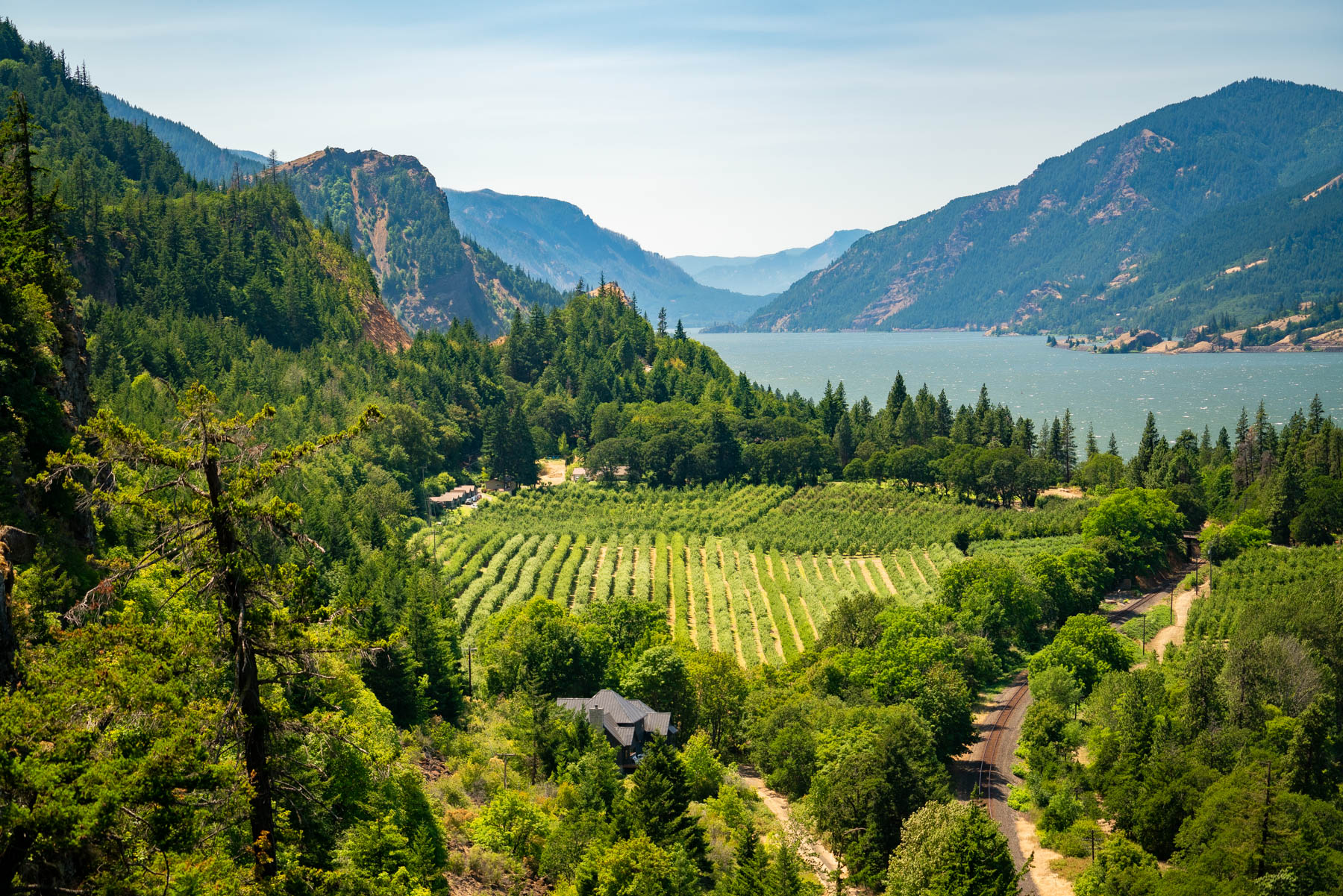
There Are Some Wonderful Museums For You To Visit
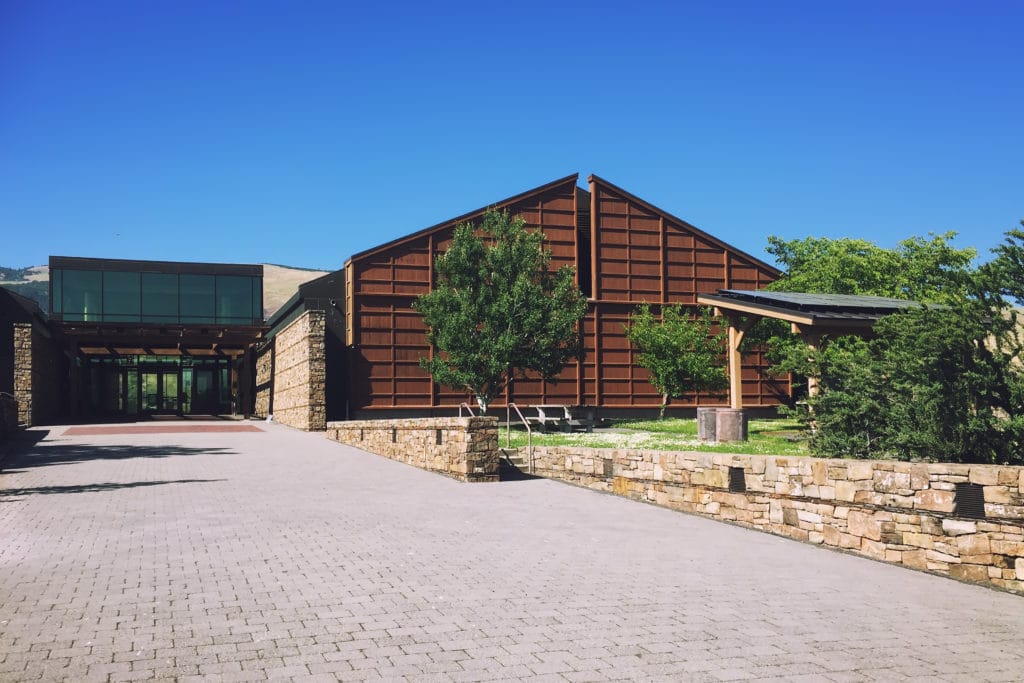
Well, maybe school’s not entirely out. There are some wonderful museums for you to visit to learn more about this amazing story. They include the following:
- Idaho-Museum of North Idaho, 115 Northwest Blvd, Coeur d’Alene, ID 83814, (208) 664-3448
- Montana-Montana Natural History Center, 120 Hickory St # A, Missoula, MT 59801, (406) 327-0405
- Oregon-Columbia Gorge Discovery Center, 5000 Discovery Drive, The Dalles, OR 97058, (541) 296-8600
- Washington-Columbia Gorge Interpretive Center, 990 SW Rock Creek Drive, Stevenson, WA 98648, (509) 427-8211
RELATED: 6 GREAT Missouri National Parks (An Honest Guide + Photos)
More Oregon National Parks
5. John Day Fossil Beds National Monument
Imagine a world formed up to 40 million years ago. You can see that world on display at the John Day Fossil Beds National Monument. It’s a world of which preserve a world class record of plant and animal evolution, changing climate, and past ecosystems. And it’s all waiting for you to explore.
Before you go there, check out some truly amazing films. These recently released films includes dynamic animations, interviews from scientists, and amazing footage of the park.

Check Out The Amazing Hiking Trails At John Day
At John Day, there are some truly amazing hiking trails. They include the Clarno Unit Trails, Painted Hills Unit Trails and Sheep Rock Unit Trails.
At the Clarno Unit, you can explore an incredibly diverse range of plant life. This includes leaves, fruits, nuts, seeds, and petrified wood from 173 species of trees, vines, shrubs, and other plants which have been found there thus far.
The Painted Hills Unit contains a myriad of leaf fossils aging 39-30 million years old called the Bridge Creek Flora, and a small outcropping of rock containing animal fossils from 30-27 million years ago.
At the Sheep Rock Unit you will see fossils of plants and animals are found in a number of geological layers dating from 33-7 million years ago.
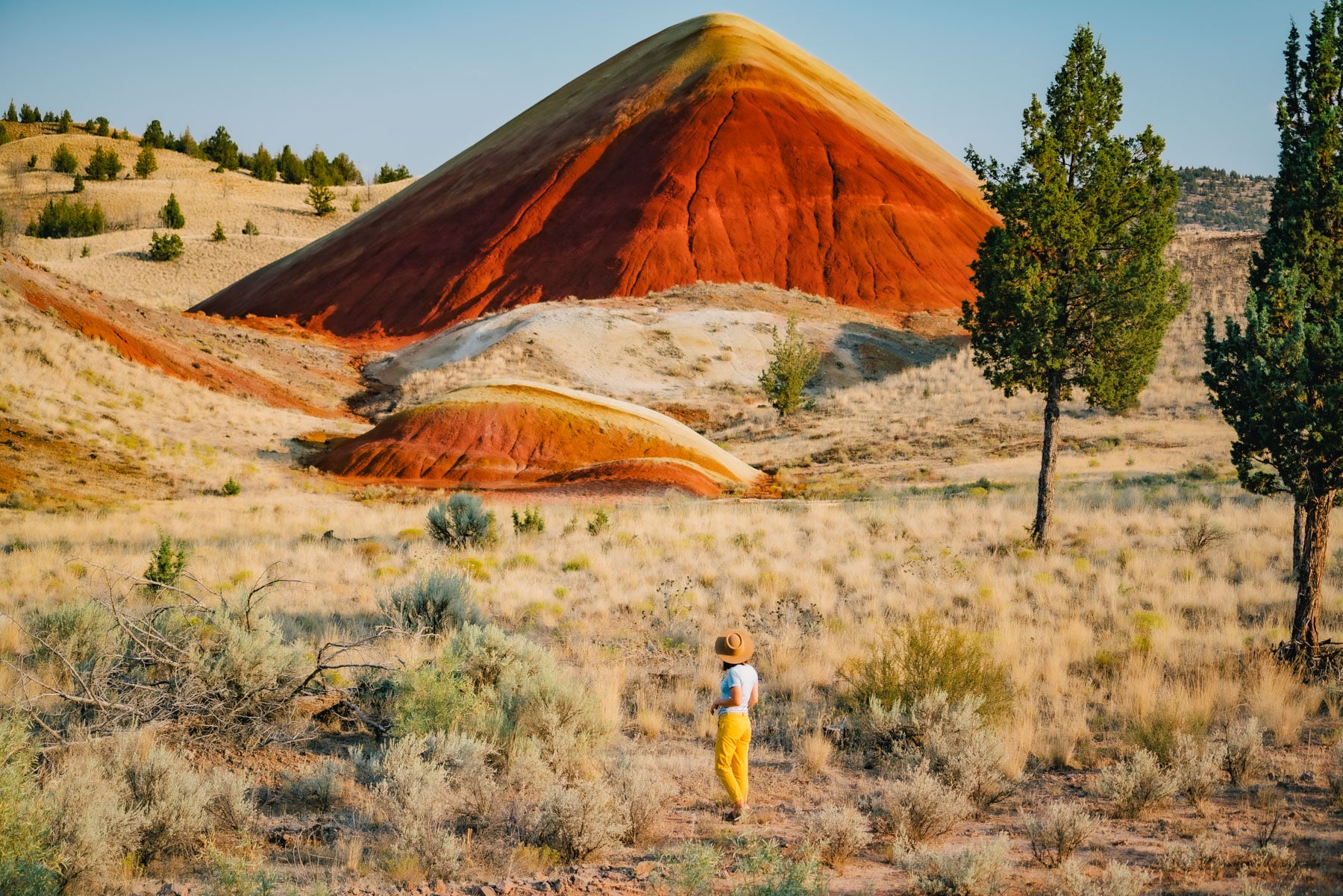
Other Outdoor Activities At John Day
There is no overnight camping at John Day, but river rafting is a popular activity there since portions of the John Day River system, including those travelling through John Day Fossil Beds National Monument, are designated as a National Wild and Scenic River as well as an Oregon Scenic Waterway.
Fishing is another activity that is legally permissible. Smallmouth bass and rainbow trout are abundant, but you will need an Oregon fishing license.
Biking is also permitted within the monument grounds on approved roadways.
Or you may just want to grab your camera and get some incredible shots of a place that’s truly out of this world.
RELATED: 10 [EPIC] Montana National Parks (An Expert Guide)
6. Lewis & Clark National Historic Trail
When you travel to the Oregon National Parks you’ll be able to retrace the footsteps of two of history’s greatest explorers – Lewis & Clark.
The Lewis and Clark National Historic Trail is a 3,700-mile long trail that follows the route of the Lewis and Clark Expedition, which took place between 1804 and 1806.
The expedition, led by Meriwether Lewis and William Clark, was tasked with exploring the newly acquired Louisiana Territory and finding a passage to the Pacific Ocean. The trail runs through 11 states, from Illinois to the Pacific coast in Oregon.
The expedition, which began in St. Louis, Missouri, traveled up the Missouri River and across the Great Plains, through the Rocky Mountains, and to the Pacific coast.
Along the way, Lewis and Clark encountered many different indigenous tribes, as well as a wide variety of wildlife and natural landscapes. They also made important scientific discoveries and established relationships with many of the tribes they encountered.
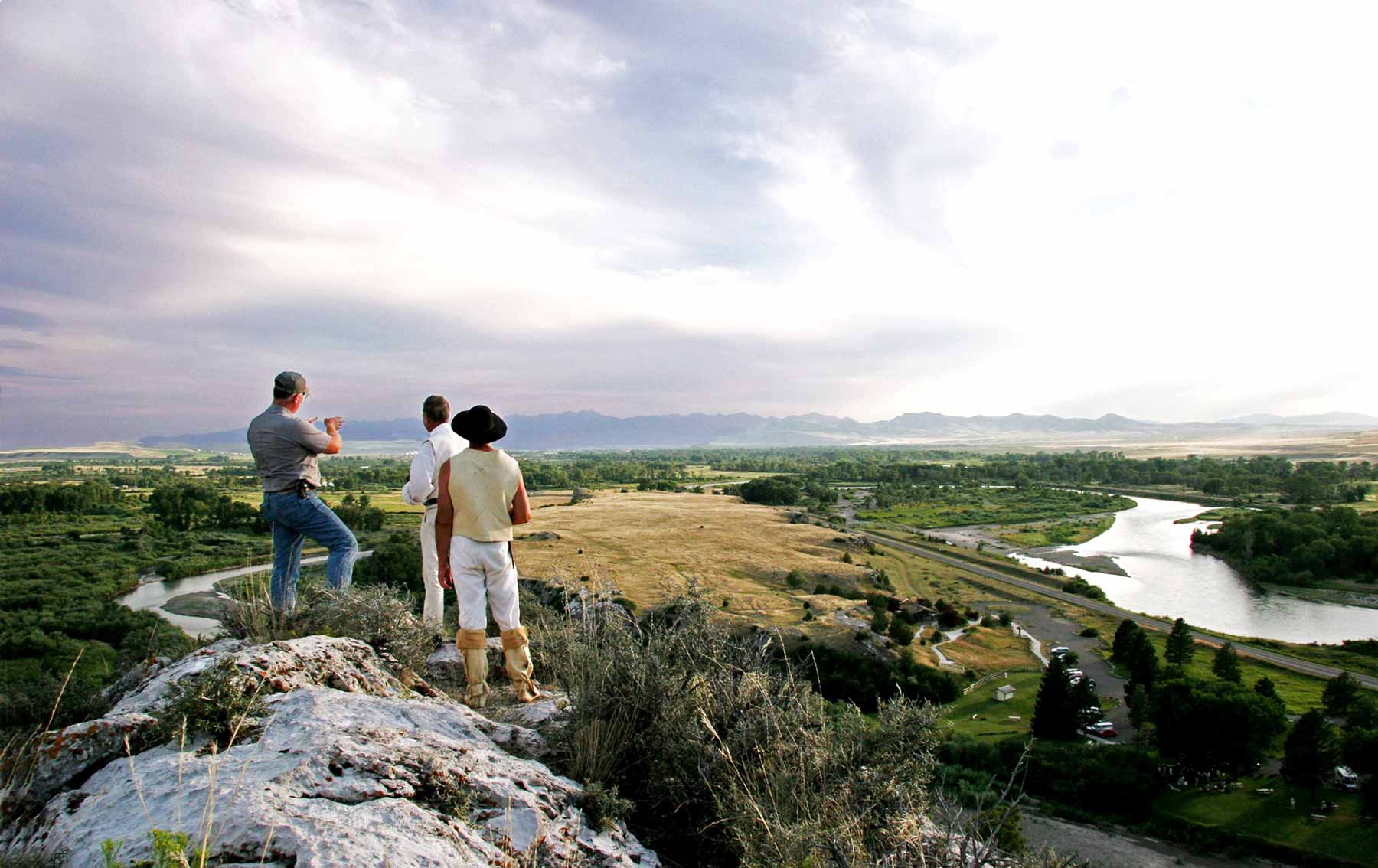
It’s A National Scenic Trail
The trail was officially designated as a National Scenic Trail by the U.S. Congress in 1978. The Lewis and Clark National Historic Trail is managed by the National Park Service, in partnership with other federal, state, and local agencies, as well as private organizations.
The trail offers a wide range of outdoor recreational opportunities, including hiking, biking, and boating. Visitors can experience the natural beauty of the trail, learn about the history of the Lewis and Clark Expedition, and explore the cultural and natural resources of the region.
The trail also provides opportunities for visitors to learn about the history and culture of the many indigenous tribes that the expedition encountered. Many of these tribes continue to have a presence along the trail, and visitors can learn about their cultures and traditions through interpretive programs and events.
The Lewis and Clark National Scenic Trail serves as a reminder of the expedition’s important contributions to the exploration and mapping of the American West and the rich history of the region.
The Lewis & Clark Trail In Oregon
Places of interest to visit in Oregon include:
- The Youngs River Falls was originally discovered by Lieutenant William Broughton of the Vancouver Expedition in 1792. He named it for Admiral Sir George Young of the Royal Navy. It would be rediscovered fourteen years later by Sergeant Patrick Gass, a member of Lewis and Clark’s Corps of Discovery.
- Tansy Point in Warrenton, Oregon, is where, on November 24, 1805, that Meriwether Lewis and William Clark’s Corps of Discovery paused to take a vote on their next campsite. At the time it was a series of Chinook Indian Villages.
- At North Gateway Park on December 9, 1805, William Clark took three men and set out from their camp on a reconnaissance excursion. They visited a location where 12 families of the Clatsop Nation dwelled in three houses.
- At the Netul Landing & Netul River Trail Meriwether Lewis and William Clark, paddled up a river that the local peoples called Netul. Today it’s called the Lewis & Clark River. On December 5, 1805, the expedition established their winter camp at a site on the riverbank that had been selected by Lewis.
- The End Of The Trail Lewis & Clark Statue was installed in 1990 to commemorate Lewis and Clark’s 4,000-mile, 18-month journey. (Source: NPS)
RELATED: 25 EPIC New York National Parks (Helpful Guide + Photos)
7. Lewis & Clark National Historical Park
There’s more to the Lewis & Clark Story within the Oregon National Parks than retracing some of this historic footsteps. Oregon was where their historic journey ended before they embarked on a return trip to share their momentous news with Thomas Jefferson and their fellow countrymen.
Fort Clatsop was the winter encampment for the Corps of discovery from December 1805 to March 1806.
Today you can make the trek to the Lewis & Clark National Historical Park. You can visit this historic fort and examine the place that the Corps of Discovery called their home.
The park offers 14.5 miles of trails which follow similar routes to those taken by the Corps of Discovery. Along these trails you will be treated to stunning panoramic views and be able to explore a wide variety of natural ecosystems.
If you’re looking to take a deeper dive and learn more about Lewis & Clark’s epic journey then one book I highly recommend is: Undaunted Courage by Stephen Ambrose.
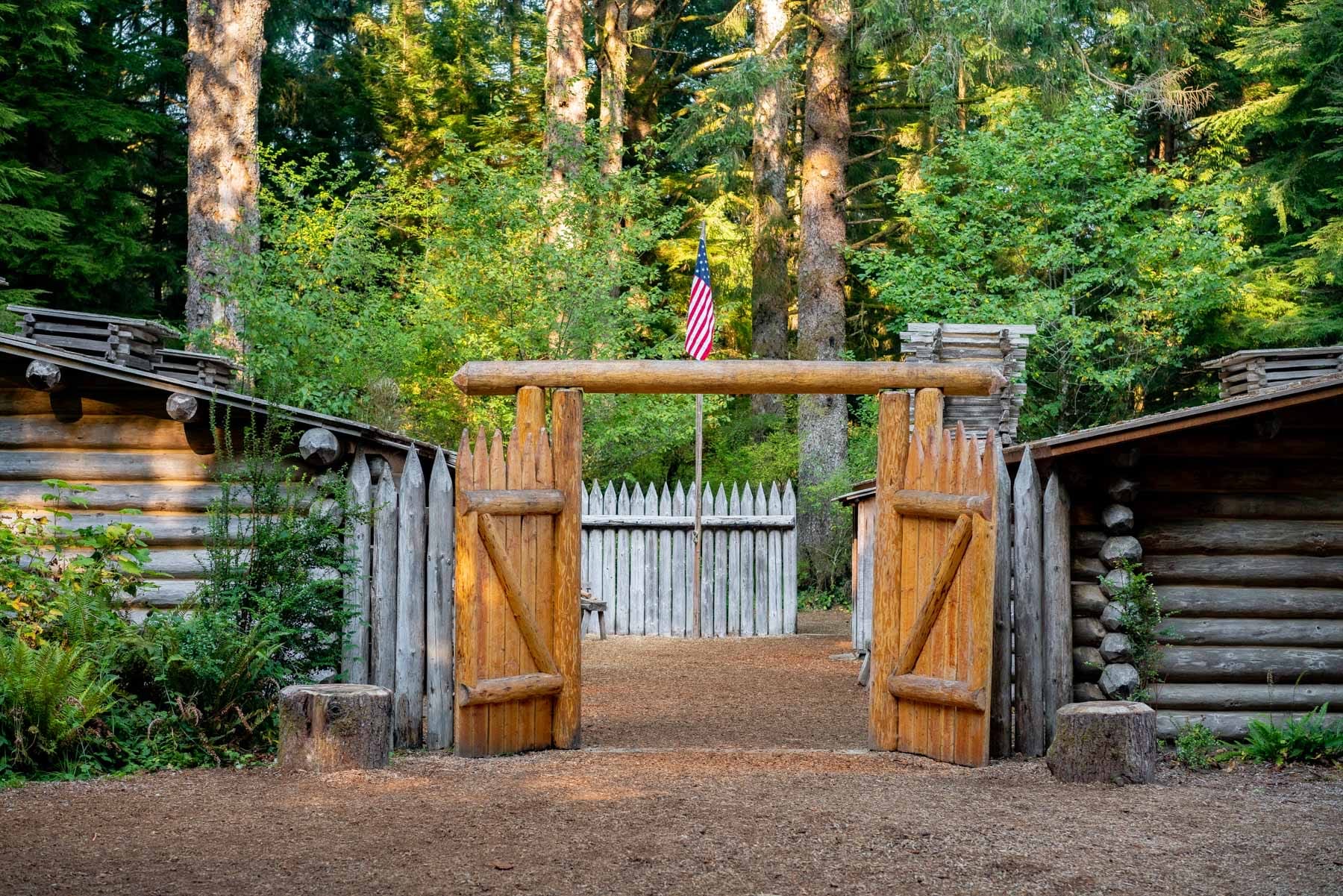
RELATED: 12 EPIC North Carolina National Parks (A Helpful Guide + Photos)
Things To Do At The Park
Some of the things you can do at the park include:
- Explore the reconstructed Fort Clatsop: The fort was the winter encampment for the Lewis and Clark Expedition during 1805-1806. Visitors can take a guided tour of the fort and learn about the daily lives of the expedition members.
- Hike the trails: The park has several hiking trails that offer visitors the opportunity to explore the natural beauty of the region. The trails range from easy, accessible trails to more challenging backcountry routes.
- Visit the Netul River Estuary: This is an important area for wildlife viewing, especially birdwatching. Visitors can take a guided tour or explore on their own to see the wide variety of birds and other wildlife that call the estuary home.
- Attend ranger-led programs: The park offers a variety of ranger-led programs, including guided walks, talks, and demonstrations. These programs provide visitors with an in-depth look at the history and natural resources of the park.
- Explore the Salt Works: The park also contains a reconstructed salt works, which was an important industry for the Chinook tribe. Visitors can learn about the process of making salt and its importance to the Chinook people.
- Visit the Visitors center: The park’s Visitors center has exhibits and displays that provide information on the history of the Lewis and Clark Expedition, the natural resources of the park, and the cultures of the Chinook and Clatsop people.
- Watch the sunset at the Sunset Beach Overlook: This location offers a beautiful view of the Pacific Ocean and the sunset, which is a great way to end your day.
- Visit the nearby communities and towns: The park is located near the towns of Astoria and Seaside, which offer visitors a variety of shopping, dining, and lodging options.
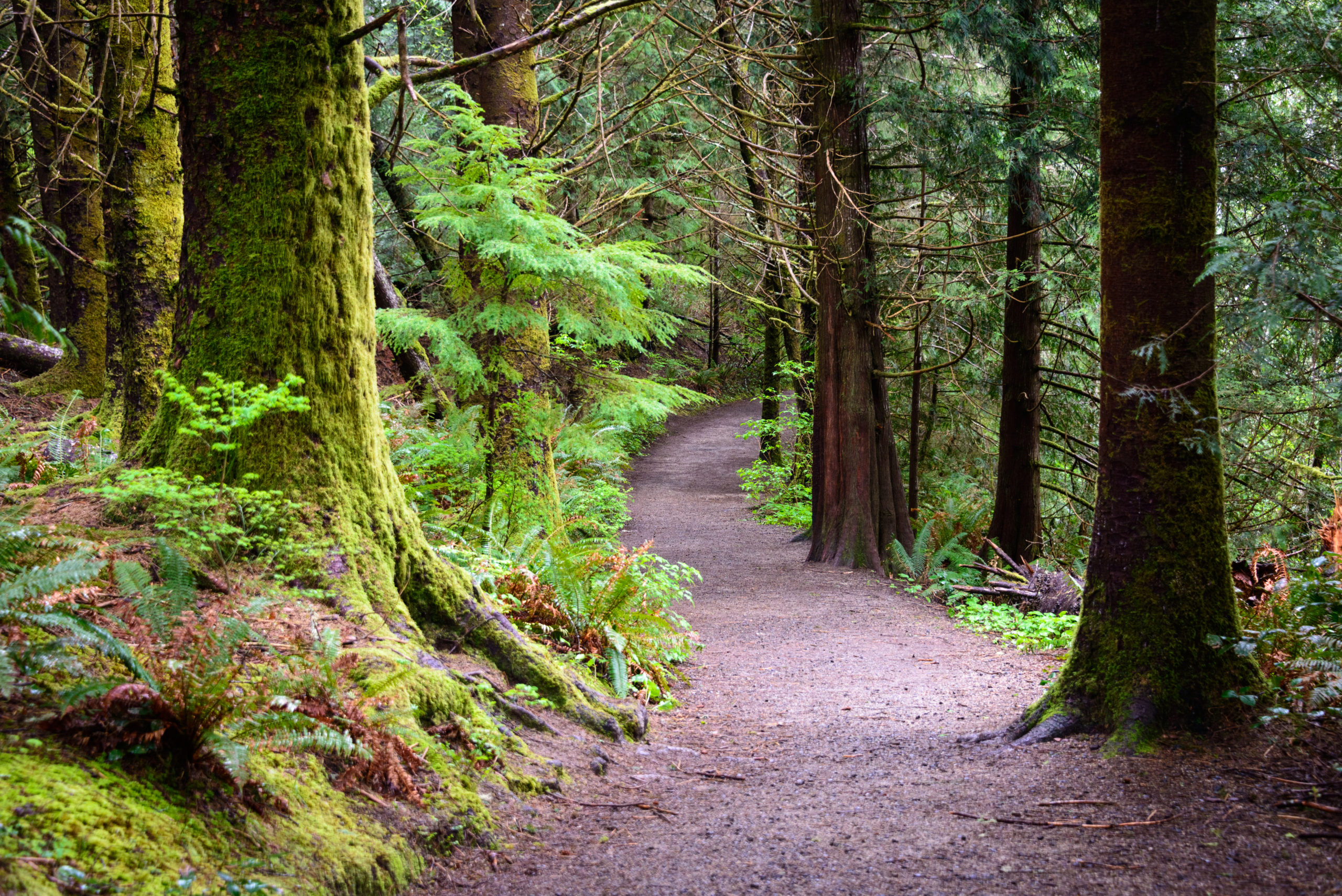
More Oregon National Parks
8. Nez Perce National Historical Park
The Oregon National Parks also tell the story of the Westward Migration and the clash between Native Americans and the U.S. Government. That story is powerfully told at the Nez Perce National Historical Park.
The conflict between the U.S. government and the Nez Perce was one of the most tragic of the many Indian wars of the 19th century. The same Native Americans whose forefathers had befriended and helped Lewis & Clark would find themselves forced off of their ancestral lands.
The U.S. Government’s efforts to force these Native Americans off of their lands produced a backlash. This backlash became known as the Nez Perce War of 1877. A small band of warriors fought American soldiers at four major battles.
In the third of these battles at the Big Hole Basin in present-day western Montana ,Colonel John Gibbon attacked the sleeping Indians with a force of 183 men. The army body count found 89 Nez Perce dead, mostly women and children.
Two months later, Colonel Nelson Miles defeated the Nez Perce at the Battle of the Bear Paw Mountains. It proved to be the final battle for the Nez Perce. Those who were not killed surrendered and agreed to return to the reservation.
If you’re looking to take a deeper dive into this topic then I recommend: Thunder in the Mountains: Chief Joseph, Oliver Otis Howard, and the Nez Perce War by Daniel Sharfstein.
Things To Do At The Nez Perce National Historical Park
Nez Perce National Historical Park has thirty-eight sites spread across Idaho, Montana, Oregon and Washington. Of the 38 different historic sites in Nez Perce, four are in Oregon.
The most noteworthy site within is the Old Chief Joseph Gravesite. Old Chief Joseph was a Nez Perce leader who refused to sell his Wallowa homeland and sign the 1863 Treaty.
Another site worth visiting is the the Nez Perce Wallowa Homeland Visitor Center. It’s located in the town of Wallowa. It’s a 320-acresite.
It includes interpretive markers along a trail which lead past the traditional longhouse and dance arbor to a stunning overlook of the confluence of the Lostine and Wallowa rivers and sweeping views of ancestral lands.
RELATED: 12 EPIC Wyoming National Parks (The Complete Guide)
9. Oregon National Historic Trail
Thus far the Oregon National Parks have provided a trail named after their neighbor to the south and a trail named after two of history’s greatest explorers. What about a trail named after the Beaver State? Actually, there is one and it has quite a history of its own.
Westward Ho! The Oregon Trail was a 2,170-mile emigrant trail which connected the Missouri to valleys in Oregon.
The original trail was established by fur traders and trappers. Shortly thereafter, wagon trains began the westward trek all the way to the Willamette Valley in Oregon.
From the early to mid-1830s (and particularly through the years 1846–1869) the Oregon Trail and its many offshoots were used by about 400,000 settlers, farmers, miners, ranchers, and business owners and their families. A lot of folks were on the move!
And when it comes to book recommendations, there’s none better than The Oregon Trail by Francis Parkman.
As a matter of fact, one of the most esteemed awards that any writer of non-fiction can receive is The Francis Parkman Prize, which is awarded annually to a nonfiction work of history on an American theme published the previous year that is distinguished by its literary merit.

Top 15 Best Oregon National Parks
10. Oregon Caves National Monument & Preserve
Oregon National Parks not only offer scenic wonders above ground, but below ground too.
The Oregon Caves National Monument preserves a spectacular cave system hidden deep within the Siskiyou Mountains. In addition to the caves the monument offers extensive hiking trails into the beautiful surrounding forest as well as hunting and opportunities to see wildlife.
One of the most popular sites at Oregon Caves National Monument is the Marble Cave which, as the name suggests, is a fantastical cave made of marble.
This park is truly a gem as there is so much to see and do. If you love to watch wildlife then you can see black bears, bobcats, cougars and the Columbian black-tailed deer. If you prefer smaller animals there’s also chipmunks and ground squirrels too.
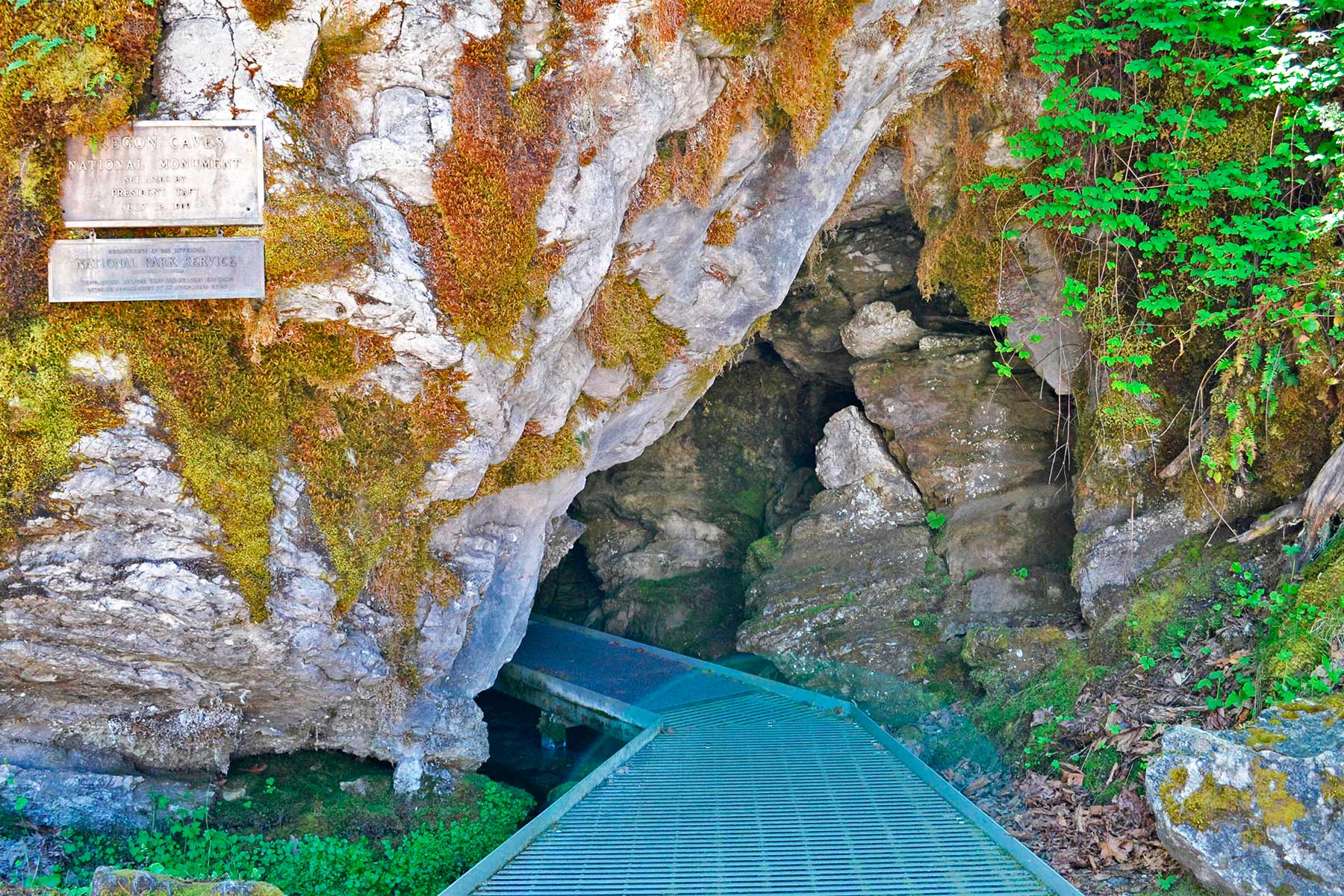
11. Newberry Volcanic National Monument
We’re More Than Just Parks which means that we’re showcasing more than just the Oregon National Parks.
Located just outside the beautiful town of Bend, Oregon, and completely surrounded by the Deschutes National Forest, Newberry Volcanic National Monument is 54,000 acres of stunning lakes, epic lava flows, and spectacular geologic features.
As one of the few national monuments managed by the US Forest Service, there are a massive array of recreational opportunities at Newberry Volcanic. These include paddleboarding, kayaking, canoeing, hiking, snowmobiling, skiing, fishing, caving, camping, horseback riding, and so much more.

Check Out Our Award-Winning Deschutes National Forest Film
We worked with the US Forest Service & Visit Bend to create a film on the Deschutes National Forest and fondly remember snowmobiling up to Paulina Peak in winter for sunrise (watch the video below).
One of the coolest things to do at Newberry Volcanic National Monument is hike Lava River Cave. At 5,211 feet long the Lava River Cave is the longest (of many) lava tubes in the state of Oregon.
Travel to a land sculpted by ancient volcanoes, where crystal blue rivers carve their way through primeval forests, towering mountains give way to lush valleys and pristine lakes, and deep below the surface lie vast networks of cavernous wonders.
12. Cascade–Siskiyou National Monument
Located on the border of Oregon & California at the southern end of the mighty Cascade mountain range, Cascade-Siskiyou is one of America’s premiere national monuments.
Within this national monument lies an incredible amount of biodiversity as well as important cultural sites to a number of native american tribes.
An insane amount of recreational opportunities are available at Cascade-Siskiyou National Monument including hiking, biking, fishing, hunting, camping, horseback riding, climbing, skiing, boating, and more.
Among these, popular activities include hiking up to Pilot Rock for incredible panoramic views, visiting Hyatt Lake, and touring the Highway 66 scenic drive.

To Learn More About Oregon National Parks Here’s Some Book Recommendations:
- Trails of Crater Lake National Park & Oregon Caves National Monument by William L. Sullivan.
- Undaunted Courage: Meriwether Lewis, Thomas Jefferson, and the Opening of the American West by Stephen Ambrose.
- Thunder in the Mountains: Chief Joseph, Oliver Otis Howard, and the Nez Perce War by Daniel J. Sharfstein.
- The Oregon Trail: A New American Journey by Rinker Buck.
RELATED: 45 National Parks Book List (Great Gifts For Parks Lovers)
Oregon National Parks FAQ
Oregon is known for its diverse landscape and many outdoor recreational opportunities, including scenic bikeways, lush forests, and beautiful lakes. From the deep Carter lake to the impressive Mount Hood, Oregon is truly a paradise for outdoor lovers.
Crater Lake is the only true national park in Oregon, but it’s certainly a beauty – boasting breathtaking scenery all around the deepest lake in the U.S.
The following is a list of must-see historic sites in Oregon:
Lewis & Clark National Historical Park
Crater Lake National Park
Oregon National Historic Trail
Fort Vancouver National Historic Site
Oregon Caves National Monument & Preserve
Lewis & Clark National Historic Trail
Nez Perce National Historical Park
Ice Age Floods National Geologic Trail
John Day Fossil Beds National Monument
California National Historic Trail
Pittock Mansion
Columbia River Maritime Museum
Timberline Lodge
Tillamook Air Museum
Fort Astoria
Why Trust Us About Oregon National Parks?
We’re Jim Pattiz and Will Pattiz, collectively known as the Pattiz Brothers (and sometimes the Parks Brothers) and we absolutely LOVE the national parks.
You should probably know that we don’t just make this stuff up out of thin air. We’ve spent our entire adult lives exploring and filming America’s national parks and public lands.
We’ve worked with the National Park Service, the Department of Interior, USDA, and the U.S. Forest Service for years creating films on important places and issues. Our work has been featured in leading publications all over the world and even some people outside of our immediate family call us experts on the national parks.
Meet The Parks Brothers
Map Of Oregon National Parks
List Of Oregon National Parks
- California National Historic Trail
- Crater Lake National Park
- Fort Vancouver National Historic Site
- Ice Age Floods National Geologic Trail
- John Day Fossil Beds National Monument
- Lewis & Clark National Historic Trail
- Lewis & Clark National Historical Park
- Nez Perce National Historical Park
- Oregon National Historic Trail
- Oregon Caves National Monument & Preserve
- Newberry Volcanic National Monument
- Cascade–Siskiyou National Monument
We Hope You’ll Follow Our Journey

Our goal here at More Than Just Parks is to share the beauty of America’s national parks and public lands through stunning short films in an effort to get Americans and the world to see the true value in land conservation.
We hope you’ll follow our journey through the parks and help us to keep them the incredible places that they are. If you’re interested in joining the adventure then please sign up below!

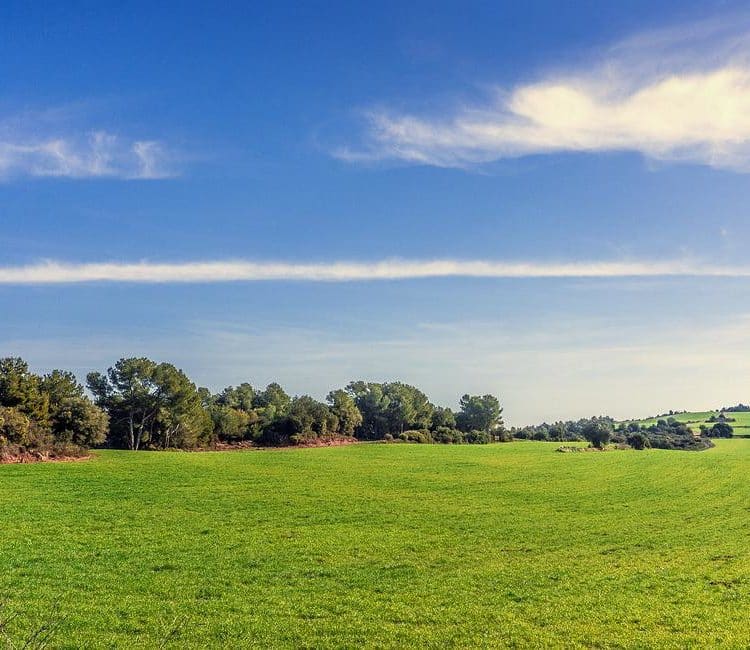
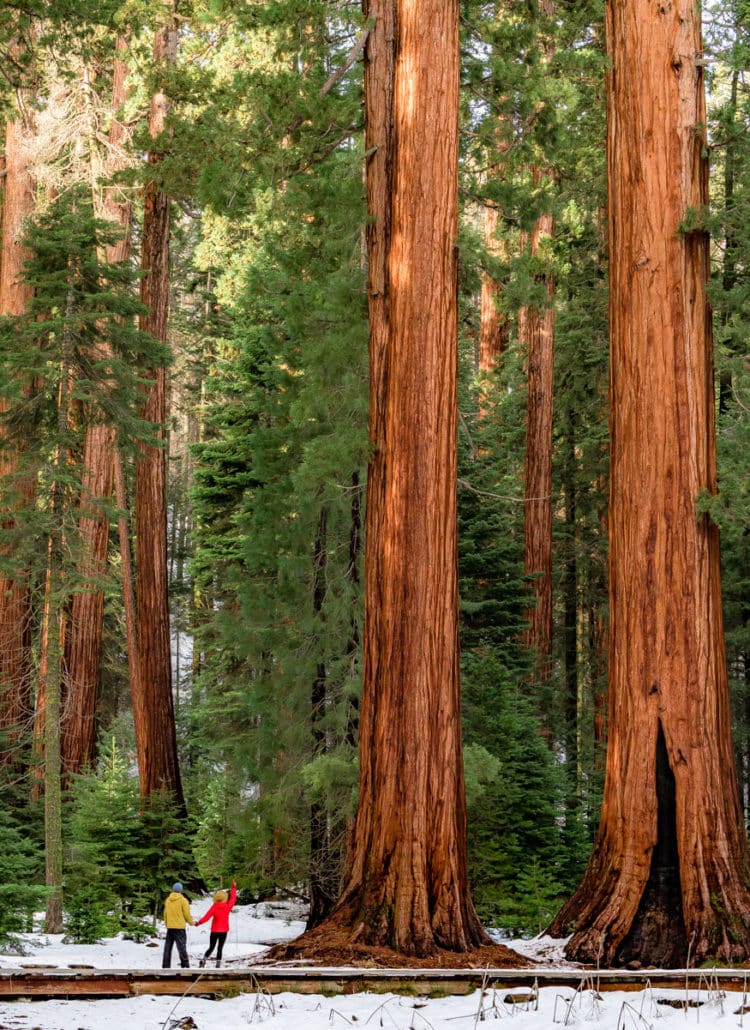
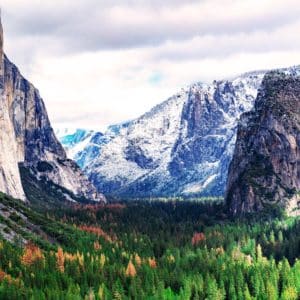

Leave a Reply